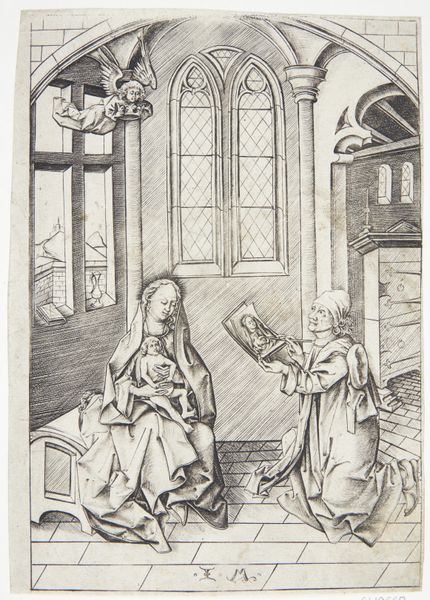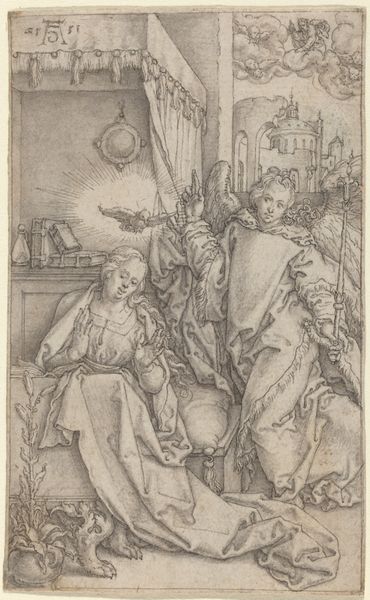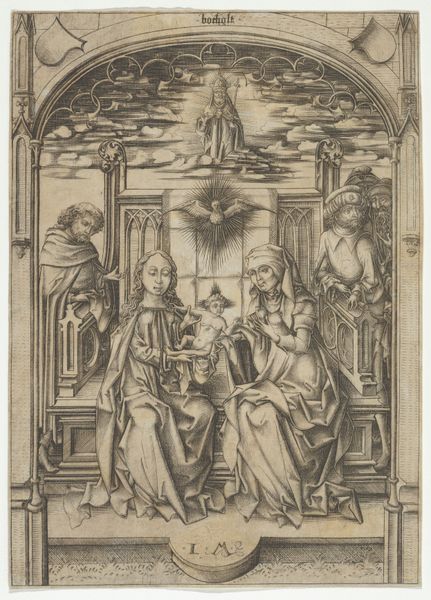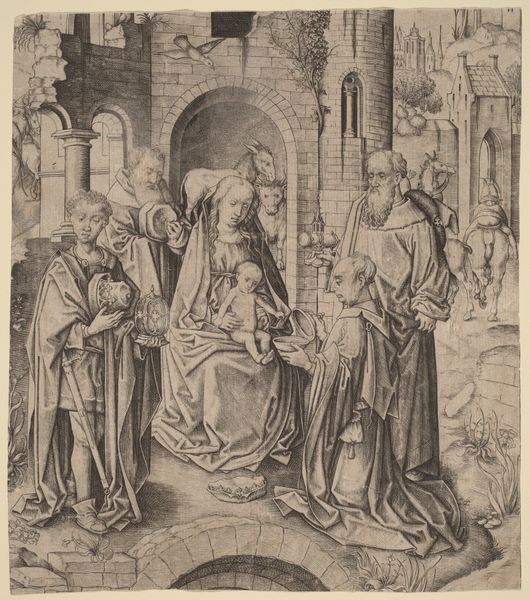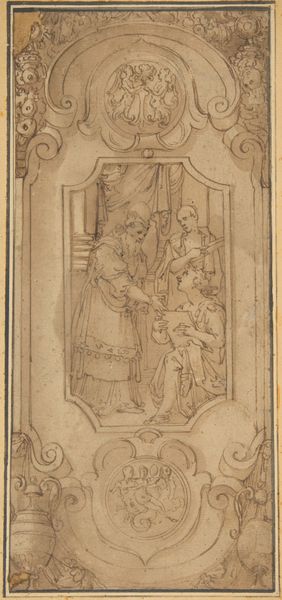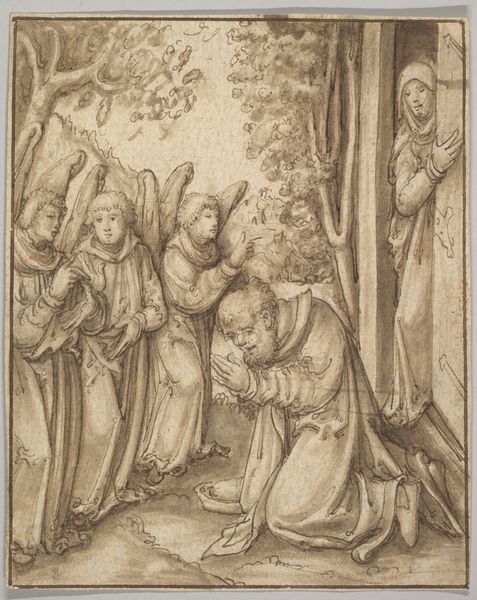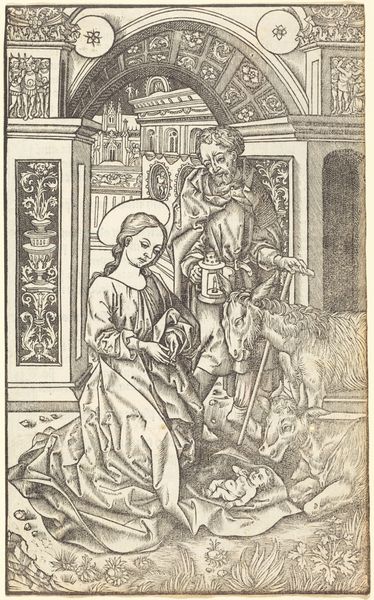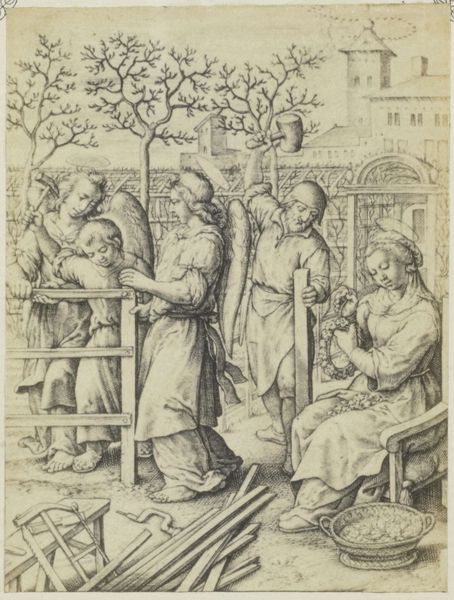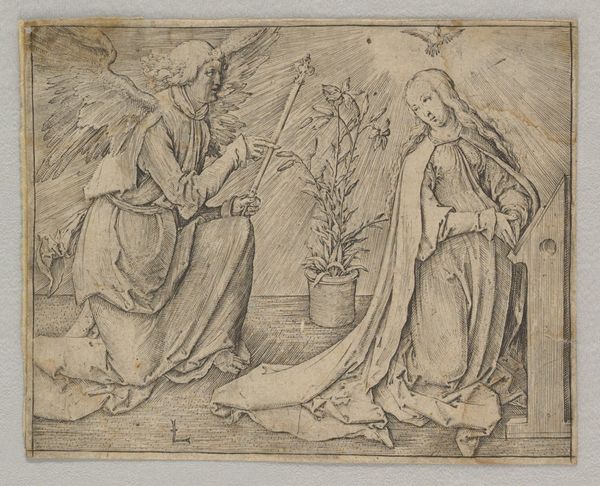
drawing, paper, ink
#
drawing
#
medieval
#
narrative-art
#
figuration
#
paper
#
ink
#
12_15th-century
#
pen work
#
international-gothic
#
miniature
Copyright: Public Domain
This delicate rendering of the Annunciation, currently held at the Städel Museum, was likely made with the engraving technique. A sharp tool called a burin would have been used to incise lines directly into a metal plate, probably copper, to create a matrix for printing. The most intriguing thing about this work is the enormous amount of labor and technical skill required to produce it. Each line has to be thoughtfully placed and executed to convey the scene's intricate details, from the folds of Mary's dress to the architectural space. The engraver's skill and patience are evident in the crispness and precision of the lines. The technique itself would have been relatively new at the time, part of a broader culture of artisanal innovation. Engravings like this allowed for the relatively inexpensive and widespread distribution of imagery. The image becomes reproducible. And so, it's a potent reminder that the division between art and craft is a construct of later history.
Comments
stadelmuseum almost 2 years ago
⋮
Mary kneels in an interior that, however distorted in terms of perspective, conveys an atmosphere of intimacy and comfort. She has been reading—the devout book is still in her hand—when the Archangel Gabriel surprises her with his appearance. He holds a scroll in reference to the message he brings: Mary has been chosen to give birth to the Son of God. Like a sign of the Immaculate Conception, the Master E.S. has incorporated the Holy Spirit entirely into Mary’s halo.
Join the conversation
Join millions of artists and users on Artera today and experience the ultimate creative platform.
